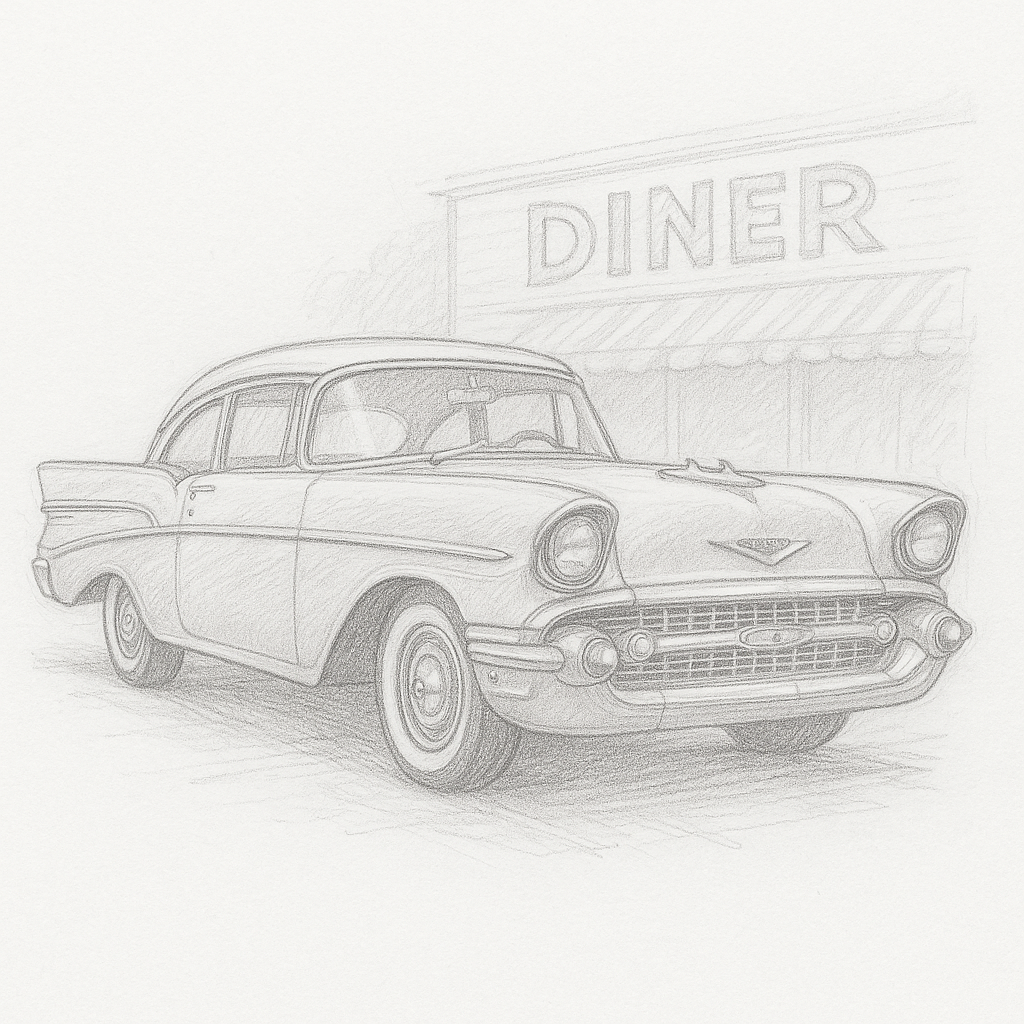

The 1950s weren’t just a golden age for the automobile—they were the moment when cars became deeply embedded in the American way of life. Shiny, stylish, and steeped in symbolism, 1950s cars were more than transportation. They were declarations of identity, tools of transformation, and cultural landmarks on wheels.
In the aftermath of World War II, America experienced an economic boom. Manufacturing shifted from military equipment to consumer goods, and cars led the way. Ownership soared. Suburban families embraced the automobile as a reward for hard work and sacrifice, a tangible expression of the American Dream. Vehicles like the 1955 Chevy Bel Air or the Cadillac Series 62 weren’t just machines—they were rolling status symbols, often finished in candy-colored paint and decked with gleaming chrome.
Styling became competitive. Tailfins—an inspiration borrowed from the jet age—grew larger each year, while interiors mimicked airplane cockpits. Automakers weren’t just selling cars; they were selling optimism, speed, and the future.
As new highways connected cities to growing suburbs, the car enabled a radically different lifestyle. Americans could now live in quiet neighborhoods and work in bustling downtowns. Shopping malls replaced corner stores. Families took road trips for leisure. Even dating changed—teenagers had a place of their own: the front seat.
Fast-food chains like McDonald’s sprouted up to serve hungry drivers. Drive-in movie theaters became weekend staples. This was the era when car culture wasn’t just part of life—it was life.
For American teenagers, the car became a symbol of independence and escape. It wasn't just about getting from A to B—it was about cruising down Main Street, radio blaring with Chuck Berry or Elvis Presley. Rock ‘n’ roll idolized cars, and cars gave teenagers a stage to perform their identities.
Hollywood noticed. James Dean’s role in Rebel Without a Cause and films like Thunder Road portrayed the car as a vessel of rebellion, masculinity, and freedom. Behind the wheel, a teen could define himself—often in opposition to parental authority and societal norms.
The 1950s also marked an explosion of automotive design and innovation. Influenced by the space race and jet planes, manufacturers pushed futuristic elements—wraparound windshields, tailfins, dual headlights, and sculpted bodies that looked like they might lift off the ground.
Technological luxuries once reserved for the elite—automatic transmissions, power steering, air conditioning—became available to the masses. The car became not just stylish, but comfortable and convenient, an extension of the living room on the open road.
The influence of 1950s car culture still echoes through American society. From custom hot rods to retro car shows, from diners with neon signs to classic rock anthems about the road, the decade left an indelible tire track on our national consciousness.
At its heart, the 1950s car was more than a machine. It was a canvas for creativity, a symbol of newfound freedom, and a vehicle for change—literally and metaphorically. In that chrome and steel, Americans saw not just reflection, but aspiration.
